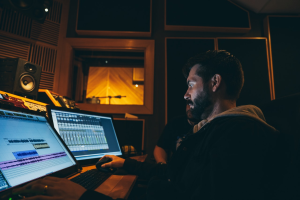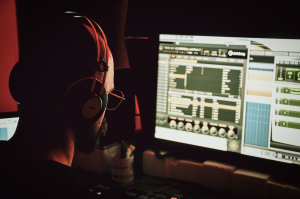Every music genre has its own rules, methodologies, and tools that give it a unique twist and set it apart from the other genres. Learning a specific genre of music will always teach you something new that no other genre can. That said, there is a music genre that won’t just teach you new methods […]

6 Common Mistakes to Avoid When Making Music
Some people say that there are no mistakes in music production. The whole point of mixing tunes and creating a kickass melody is to have the freedom to do what you like. Your sound is good to go as long as the melody flows smoothly.
However, when listening to someone else’s music, you will notice when the composition will go off track. I have experienced this many times. I am open to any feedback, and so are my fellow producers. We take criticism really well because it allows us to learn and grow.
Some people think that mixing a great tune simply involves layering tracks. If this was truly the case, my music would be at the top of the Music Billboard. Alas, it’s not! As a music teacher in Abu Dhabi, I have learned a lot about the different styles of soundtracks. I thought I knew it all, but that’s the beauty of music. There’s always something new and better. If you are struggling with your music, don’t give up. Even seasoned pros find themselves stuck at some point, so I have created this guide to help you avoid the top six common music production mistakes.
Let’s begin:
Making Music Without Learning the Basics of Music Theory
Those music sheets with notes are not just for people learning to play the piano or guitar. To excel in your music career, you need to start from scratch. This is one of the most common mistakes because you are limiting yourself.
Understanding the A, B C’s of music theory eliminates the guesswork in finding scales, keys, and notes, choosing melodies, etc., and increases workflow productivity. Set aside a couple of hours for learning. You will find various free resources online. You can also check out YouTube videos for beginners and dedicate a small amount of your time to daily lessons.
If you plan to pursue this career line professionally, consider applying for music certificate courses. Once you are familiar with the basic music theory, you will be easily able to stick to keys, understand chords, and melodies, and notes will make more sense. As a result, your music will have a rhythm to it.
Overproducing
The number one rule of music lessons for beginners is to produce music with a strong core idea. However, not many of us do this. A friend of mine was a great hummer. He would come up with a tune in his mind and then try to sound it out on the keyboard. That’s not how music is made!
You need a music plan, whether it’s an excellent sound design, a catchy harmony, a track’s overall vibe or quality reference tracks. The key is focusing on the genre. You will probably stack tracks if you don’t, overproducing a weak tune. If you listen to your favorite song, you will realize it’s comprised of a few elements.
On average, a track has five core elements with a basic structure, including a lead sound, a kick drum, bass, percussion, and a snare drum. You must distinguish between each element to lay them out accordingly. It will help you decipher the track’s core.
Listen to a few award-winning tracks to understand how the elements work together. Then listen to FX samples for weak tracks.
Getting Excited in the Start
When I started making tracks, I would get excited and pat myself on the back, saying, “Good job, Jason.” I wouldn’t even polish my idea. Later on, while trying to move forward, I realized I was messing with the wrong synthesizer.
The first thing taught in music classes in Abu Dhabi is that you can’t move forward with a half-baked idea. Layering sample after sample, adjusting levels, and compressing drums will give you a messy tune. So, I recommend keeping your cool.
This is the best piece of advice you will hear. I wish someone had given it to me. When choosing elements for your track, focus on each for a few seconds. The best tracks are made with a series of good and quick decisions. It’s true! The more you contemplate the elements, the more you will get the urge to tweak them a bit. This brings us to the next mistake:
Focusing on the Elements Individually
I had a talented engineer friend who liked to dabble in music production. One day, he decided to layer a classical recording with a personal touch. After making small changes, he turned the baritone vocalist’s sound into something a bit harsh, overly reverberant, and unnatural. Once he was done, he played the music for me and said, “Doesn’t sound right, does it?”
I simply nodded and said nothing. He then decided to do something different. He took off all the additions he had made and used one sound effect and two plug-ins. The result was amazing. He continued to follow this discovery and has produced great classical recordings since then.
I would have said a lot when he failed the first time. However, the fact that he listened to his track as a whole helped him understand he had played with the wrong keys. So, before you pick a plug-in, think about what you want to achieve. Are you going with or against the flow?
For example, if you are increasing the drum bus, is it for a dramatic purpose? A vocal with a sparkly top end adds excitement to the track. Perhaps, it is more suitable for the genre you have in mind. Whatever the case, you must consider where you want to go before choosing a plug-in.
The BPM
This mistake is easily made because we mostly follow the default tempo settings, 128 BPM when we start making a track. Even during musical instrument lessons, we test the tune and then confidently play it.
Our ears usually adapt to the tempo, which is why we feel it’s going perfectly. However, I suggest you experiment a little by making your track slow and fast and then find the sweet middle. If choosing a BMP is too confusing, take a break and listen with fresh ears the next day.
Using Too Many Effects
There was a time when I slapped reverb on every one of my tracks. As a result, the music I produced was only good enough for cats and dogs.
Remember: Some sounds come with reverb, meaning adding another element will make them a mess. If this is your cup of tea, then here’s what you can do to make your sound more listenable: Pick a total of five reverbs for a mix. Add an exploding snare, the vocals, and the drums. If there’s a dry guitar in the mix, add a spring reverb
You can easily avoid these mistakes by listening to reference tracks. They keep you honest and help you develop something unique when you are stuck on an element.
The Young Musician Music Institute offers music certificate courses for all kinds of instruments, including piano, guitar, violin, etc. Why not book a free trial lesson from their music teacher in Abu Dhabi to find your music preference? For more information, call +971 2 556 2080 or +971 2 678 3550




